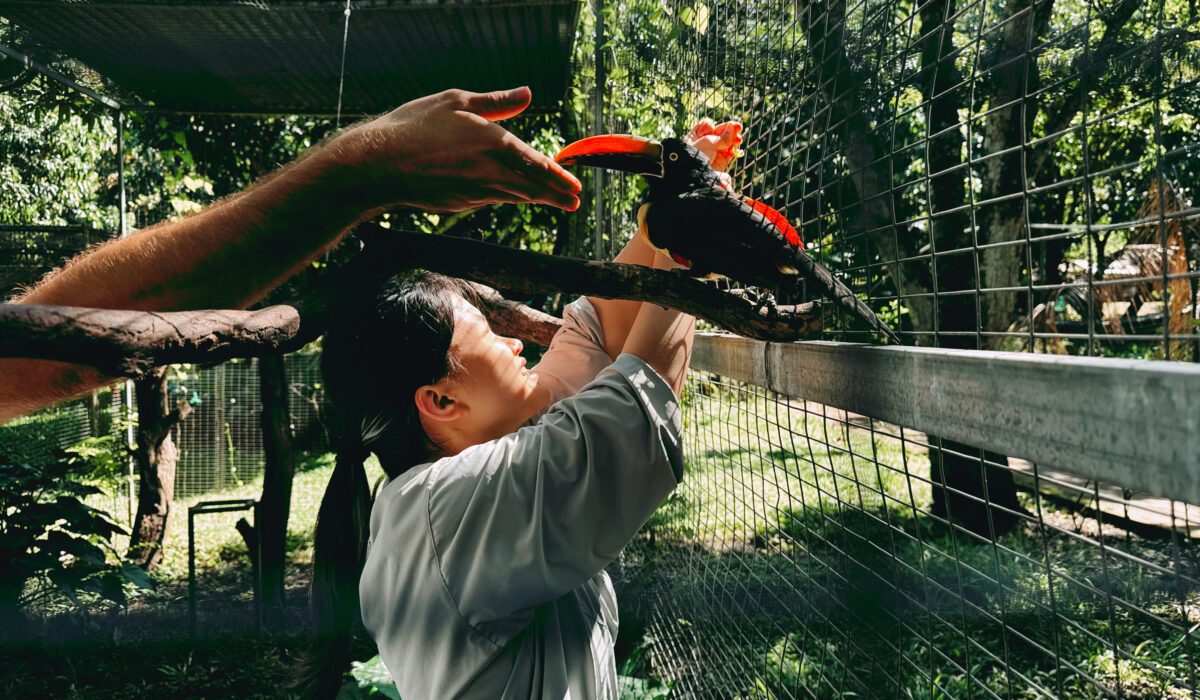Volunteer Opportunities for Teens in Winter
Table of Contents
Why Teen Volunteering Matters in Winter
Winter break can be more than just downtime—it’s a chance for teens to step outside the classroom and make a difference. Volunteering develops empathy, responsibility, and leadership, while also helping teens discover interests that could shape their academic and career paths. Colleges look for students who show initiative during quieter seasons, making winter volunteering both meaningful and strategic.
Types of Volunteer Opportunities
Volunteer opportunities are not one-size-fits-all. Teens can choose from different types of service depending on their passions, skills, and availability. Each type offers unique benefits and helps students build valuable qualities for the future:
Community Service
Local opportunities such as food banks, soup kitchens, shelters, or senior centers allow teens to connect with their community. This type of service builds empathy, responsibility, and a sense of civic duty while directly meeting essential needs.Educational Volunteering
Teens who enjoy academics can tutor younger students, assist in after-school programs, or support literacy initiatives. These roles improve communication skills, patience, and mentorship ability, while reinforcing the teen’s own knowledge.Environmental Volunteering
Activities like park clean-ups, recycling drives, or conservation projects teach stewardship of the planet. Teens develop teamwork and problem-solving skills while gaining awareness of environmental challenges and sustainability practices.Healthcare and Wellness Support
Supporting hospitals, clinics, or health campaigns gives students exposure to the medical field. Teens may help with patient comfort, community health education, or wellness events. These roles nurture compassion, resilience, and interest in health-related careers.Arts and Cultural Volunteering
Museums, libraries, and cultural centers often rely on teen volunteers to support events, exhibitions, or creative workshops. Teens in these roles develop public-speaking skills, cultural literacy, and creative expression.Advocacy and Digital Volunteering
For tech-savvy teens, virtual volunteering can include managing social media for nonprofits, creating content, or supporting advocacy campaigns. This type of service teaches digital literacy, persuasive communication, and how to use technology for impact.Leadership & Structured Residential Programs
Programs like GPL (Global Philanthropy Leadership) go beyond tasks by immersing students in project-based, residential experiences. Teens collaborate, lead, and reflect—combining service with leadership growth. This type prepares students not just to help, but to lead with vision.
By exploring these volunteer opportunities categories, teens can find opportunities that match their personal interests while developing qualities—such as empathy, leadership, and problem-solving—that colleges and future employers deeply value.

Trusted Teen Volunteer Opportunities in Winter
Local & Nonprofit Organizations
Your community is often the best place to start. Local nonprofits, libraries, museums, food banks, and shelters welcome teen volunteers—especially in winter, when demand increases. These opportunities are supervised, accessible, and often count toward school service hours. Teens can sort donations, help with visitor services, or assist staff in public-facing roles, all while developing empathy and teamwork skills.
Examples include teen councils at museums, library reading programs, or historical societies seeking help with digitization. These roles are valuable because they combine practical contribution with real learning—teens practice communication, problem-solving, and responsibility in safe, structured settings.
Volunteer & Leadership Combined Program
For teens ready to go beyond traditional service, the Global Philanthropy Leadership (GPL) Winter Session offers one of the most impactful teen volunteer opportunities available. Unlike short volunteer gigs, GPL blends service + leadership training + mentorship in a residential, immersive format. Students don’t just perform tasks—they co-create projects, engage in guided reflection, and practice leadership in real-world contexts.
This makes GPL especially valuable for families seeking both safety and educational depth. Teens return not only with community service hours but also with leadership experience, cross-cultural understanding, and stories that strengthen college applications.
Virtual & Online Volunteering
Not every family has the time or means to arrange in-person service, especially during a short winter break. That’s where online volunteering comes in. Virtual opportunities allow teens to contribute meaningfully from home—whether by tutoring younger students, offering technical support, or assisting nonprofits with digital outreach. This format is highly flexible, making it easy to balance with academics, family commitments, or holiday travel.
Online volunteering also equips teens with 21st-century skills. For instance, managing a nonprofit’s social media teaches digital marketing and audience engagement, while translating materials for NGOs builds cross-cultural awareness and language proficiency. These experiences are not only fulfilling but also transferable to academic projects and future careers. Platforms such as VolunteerMatch and DoSomething.org list vetted projects specifically designed with teens in mind, giving families peace of mind about safety and legitimacy.
National & International Volunteering
For families seeking a more structured and immersive experience, national and international volunteer programs offer unique opportunities to serve while traveling. These programs often last one to two weeks, making them ideal for winter break. Teens may engage in teaching English, supporting healthcare awareness campaigns, or participating in environmental conservation projects abroad. Such work exposes them to global perspectives, encouraging adaptability and resilience in unfamiliar settings.
Trusted organizations like Projects Abroad, United Planet, and IVHQ provide carefully supervised placements with orientation, safety briefings, and ongoing mentorship. While these programs require more planning and carry program fees, they give students more than service hours—they deliver independence, cultural immersion, and leadership growth. Colleges value applicants who have demonstrated the ability to thrive outside their comfort zone, making international service one of the most impactful teen volunteer opportunities available.
Red Cross and Established Youth Programs
Parents seeking reliability often turn to institutions like the American Red Cross Youth Volunteers or local United Way chapters. These organizations have long histories of community service and structured youth programs. Teens might assist with disaster preparedness workshops, health campaigns, or fundraising drives.
Because they are nationally recognized, these programs give families peace of mind and provide students with certificates or verified hours—useful for both school requirements and college applications.
How to Choose Right Volunteer Opportunities
1. Align with your teen’s interests
The best volunteering experiences are the ones that connect to your teen’s passions. A student who enjoys STEM might thrive in tutoring or museum outreach, while one who loves the outdoors may find purpose in conservation projects. When volunteering aligns with genuine interests, teens stay motivated and are more likely to commit consistently.
2. Check safety and supervision
Parents should prioritize programs that ensure proper guidance. Look for organizations with trained staff, clear safety protocols, and structured activities. For travel or residential programs, ask about staff-to-student ratios and emergency plans. A safe, supervised environment not only reassures parents but also allows teens to focus on growth rather than logistics.
3. Consider time commitment and schedule
Winter break is short, so the format matters. Some opportunities only require a few hours a week, while others are intensive, week-long residential camps. Families should balance volunteering with rest and family time to avoid burnout. Choosing the right length ensures that teens remain energized and engaged throughout the experience.
4. Focus on impact and learning
Not all volunteer opportunities are equal. Some may feel like busywork, while others provide mentorship, reflection, and measurable outcomes. Seek programs that challenge teens, encourage leadership, and include opportunities to reflect on what they’ve learned. These are the experiences that shape personal growth and strengthen college applications.
5. Budget and logistics
If travel or structured camps are involved, consider all practical details: transportation, housing, visas, insurance, and program fees. Families should plan early to avoid last-minute stress. Remember that many local or virtual opportunities are low-cost or free, while structured programs like GPL offer comprehensive training and support that justify the investment.
Frequently Asked Questions
Q: What are volunteer opportunities for teens in winter?
From local museum roles to international service trips or online tutoring—teen volunteer opportunities range across sectors, modes, and time commitments. Families can choose based on interest, safety, and scheduling.
Q: Can I volunteer virtually during winter break?
Absolutely. Many nonprofits welcome remote help in writing, social media, tutoring, content creation, or research. Virtual volunteer opportunities are flexible and can be just as impactful as in-person service.
Q: Do I get credited volunteer hours?
Often yes—for school, clubs, or national awards. Always confirm with the organization and maintain logs or proof. Recognized volunteer opportunities usually provide certificates or letters of confirmation.
Q: Is it okay to try something small first?
Definitely. A few well-chosen hours at a local nonprofit or virtual role can lead to bigger, more meaningful teen volunteer opportunities later. Small starts often build momentum toward larger commitments.
Q: Can teen volunteering help my college application?
Yes. Consistent, meaningful service that shows leadership, impact, and reflection will strengthen your profile. Admissions officers value students who actively seek volunteer opportunities during less obvious times, such as winter break.
Turning Winter Into Volunteer Opportunities
Winter volunteering is more than just a way to fill free time—it’s a chance for teens to build empathy, confidence, and leadership in real-world settings. From local nonprofits to global programs, each set of volunteer opportunities develops different skills that will stay with them far beyond high school.
For families, the key is choosing options that are safe, structured, and meaningful. Whether your teen spends a few hours tutoring online, helps at a community food bank, or joins a residential program, the goal is the same: growth through service.
Programs like the Global Philanthropy Leadership (GPL) Winter Session show how teen volunteer opportunities can be elevated into transformative experiences—blending service with leadership training and reflection. With the right guidance, your teen’s winter break can become a season of impact, learning, and inspiration.
By submitting this form, you are consenting to receive marketing emails from: IvyMax, 41111 Mission Blvd., Suite 200, Fremont, CA, 94539, https://ivymax.com/. You can revoke your consent to receive emails at any time by using the SafeUnsubscribe® link, found at the bottom of every email. Emails are serviced by Constant Contact
Interested in our program?
Complete the form below and we’ll quickly respond with detailed information, and answers to all your questions!

